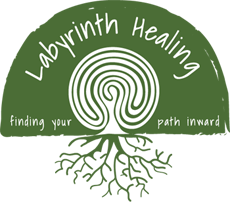Individual Therapy
Individual therapy with me is sort of like what they show in the movies.
Sort of.
Yes, sometimes there’s a yellow steno pad and I’m taking notes.
That happens in the first 1-2 sessions, when I ask you lots of specific questions to get to know you and your life better.
(I can’t do a good job as your therapist if I don’t get the lay of the land.)
Beyond that, there’s no notepad,
no antiseptic ‘mmhmms’ from behind steepled fingers,
and only occasionally a ‘and how does that make you feeeeeel?’
(I can’t abandon that therapist stereotype entirely!)
If the thought of seeing a psychotherapist makes you think of fainting couches and free association, think again. Yes, some therapists still practice in that tradition, but that’s not how I was trained and it’s not how I do things.
What does individual therapy look like with me?
Therapy in Austin with me looks like this: us both sitting comfortably across from each other in my office, talking. I’m barefoot and crosslegged, my shoes parked by the foot of my armchair.
You’re doing most of the talking. I’m listening closely.
I help you slow down your words sometimes, to pay attention to what’s happening in your body. Sometimes there’s crying. Sometimes there are aha! moments and big realizations.
There can be a fair amount of laughter and jokes. Silence, too. Perhaps a couple of book recommendations, if you’re game.
There are all sorts of things to fidget with on the end tables– little ceramic knick knacks, a cool finger labyrinth, a blue blown-glass heart, a little wooden box with a picture of a covered bridge on it.
Generally, I will answer your questions, even if they’re about me. I don’t dodge that stuff. There’s more to me than just being a psychotherapist, after all.
Occasionally there’s a, “Damn it, Ann—really?” after I’ve offered you an idea—but it’s usually more exasperated than actually angry.
And sometimes there’s a bit of fuzziness that comes up when things get really intense. I can help you gently shift out of that, to come back into your body.
We might do EMDR therapy if we’ve chatted ahead of time about it and you’re on board. And man, that stuff looks way weirder than talk therapy, but is a really cool and powerful therapeutic process.
It’s not for everyone, and we’ll discuss all the pros and cons before we ever try it.
Every therapist has their particular brand of expertise. I specialize in individual therapy for codependency & people-pleasing, trauma recovery, therapy for therapists, and counseling for new moms. Some therapists love working with couples, families, children, and teens. I’ve worked with all of those groups before, some for years– but individual therapy for adults is my calling and now it’s all I offer in my practice.
I’ve been seeing clients since 2005 and I have a good feel for where I do my best work– these specialties are where I really shine.
I know getting started in therapy can feel intimidating.
I’ve taken the plunge with several different therapists over the course of my life and believe me, being a therapist doesn’t make that process any easier.
Finding individual therapy in Austin is like finding therapy anywhere. It’s a Google search and a leap of faith.
It can be scary to be truly seen, especially if you’re a people-pleaser and used to being a chameleon to please those around you or a new mom feeling totally disillusioned about what is supposed to be the happiest time of your life.
I can make room for all of it, wherever you are.
I genuinely want to know how you are doing, and how we can make things better.
To get a sense of what a session might feel like, go ahead and schedule your free 30 minute consult.
You can come in and give it a whirl, or browse the testimonials to see if maybe this is a really bad idea. ;)
If I’m not the right fit for you, don’t worry– there isn’t a shortage of therapy in Austin. (We have so many fantastic psychotherapists in this town, there’s sure to be several that are a great fit for you.)
After a half hour together I bet I’ll have a pretty good notion of who could be a good fit and will gladly help you link up with them.
In the meantime, spend as much time here as you like. Read up, get your questions answered, and touch base whenever you’re ready to schedule a consultation.






